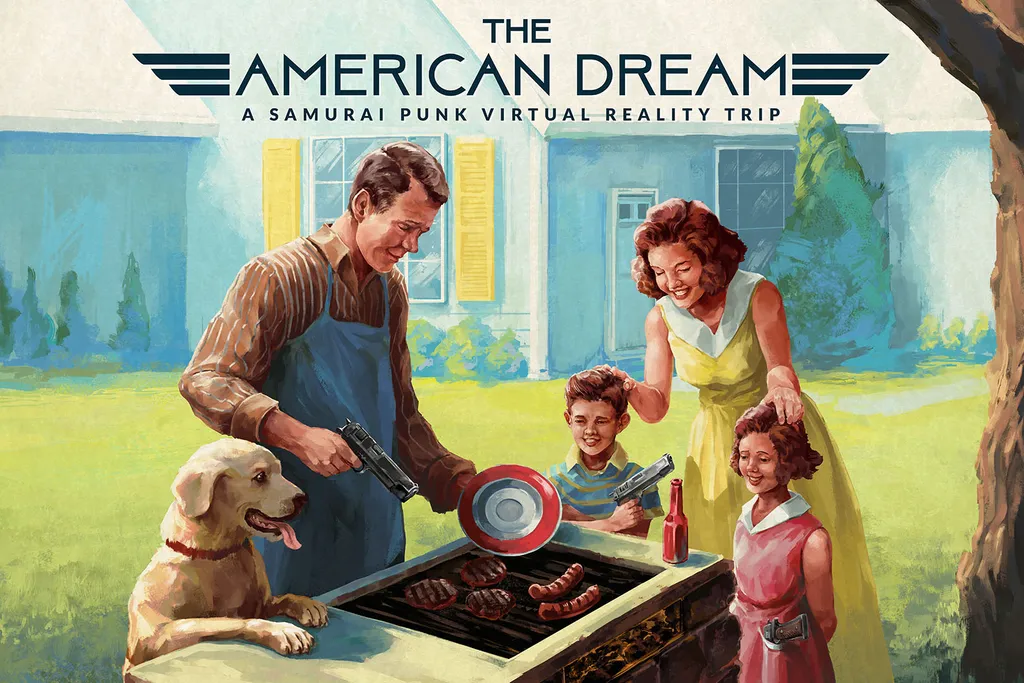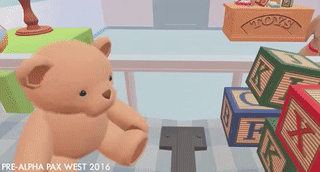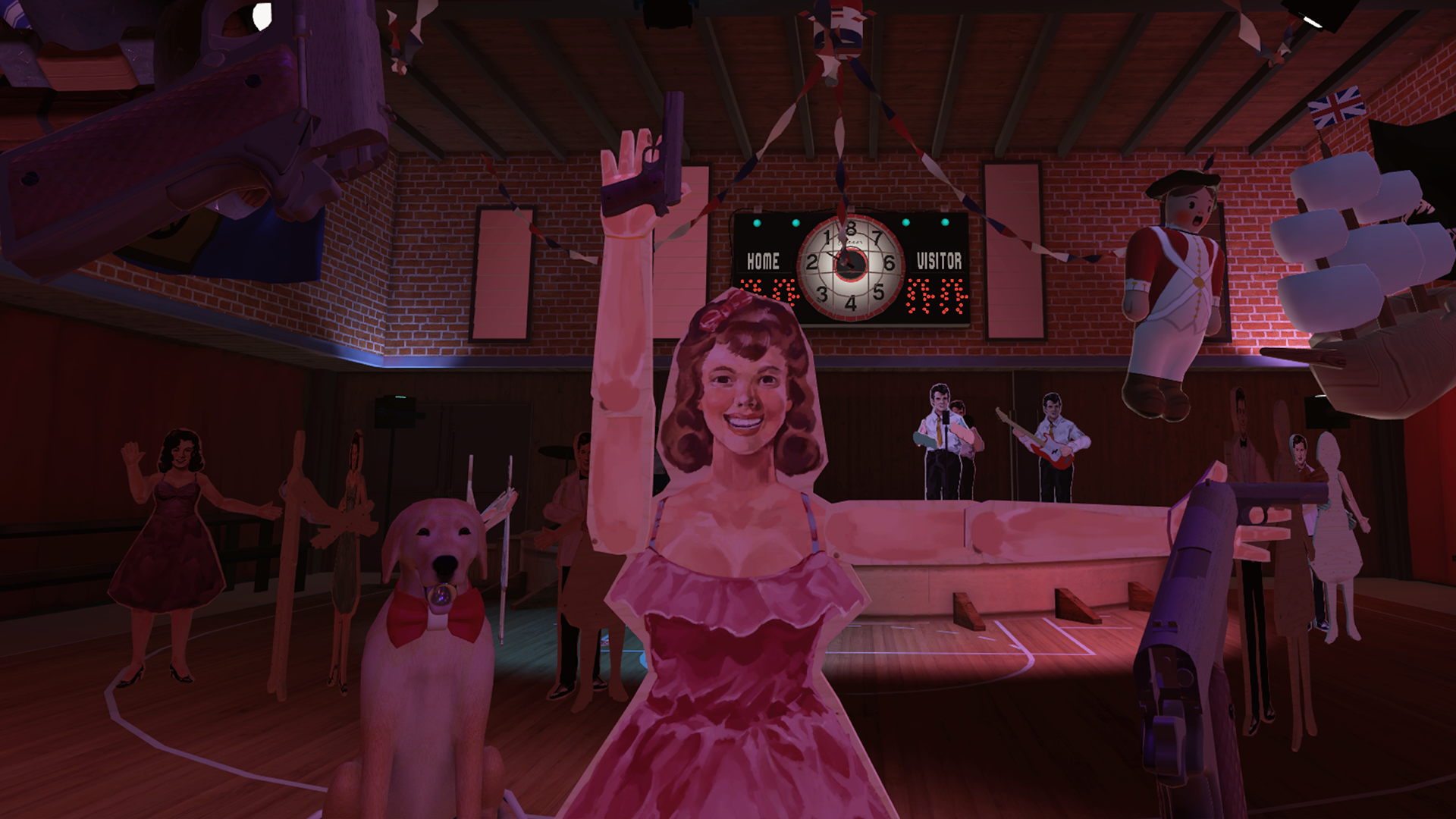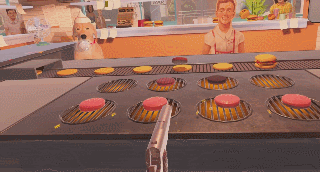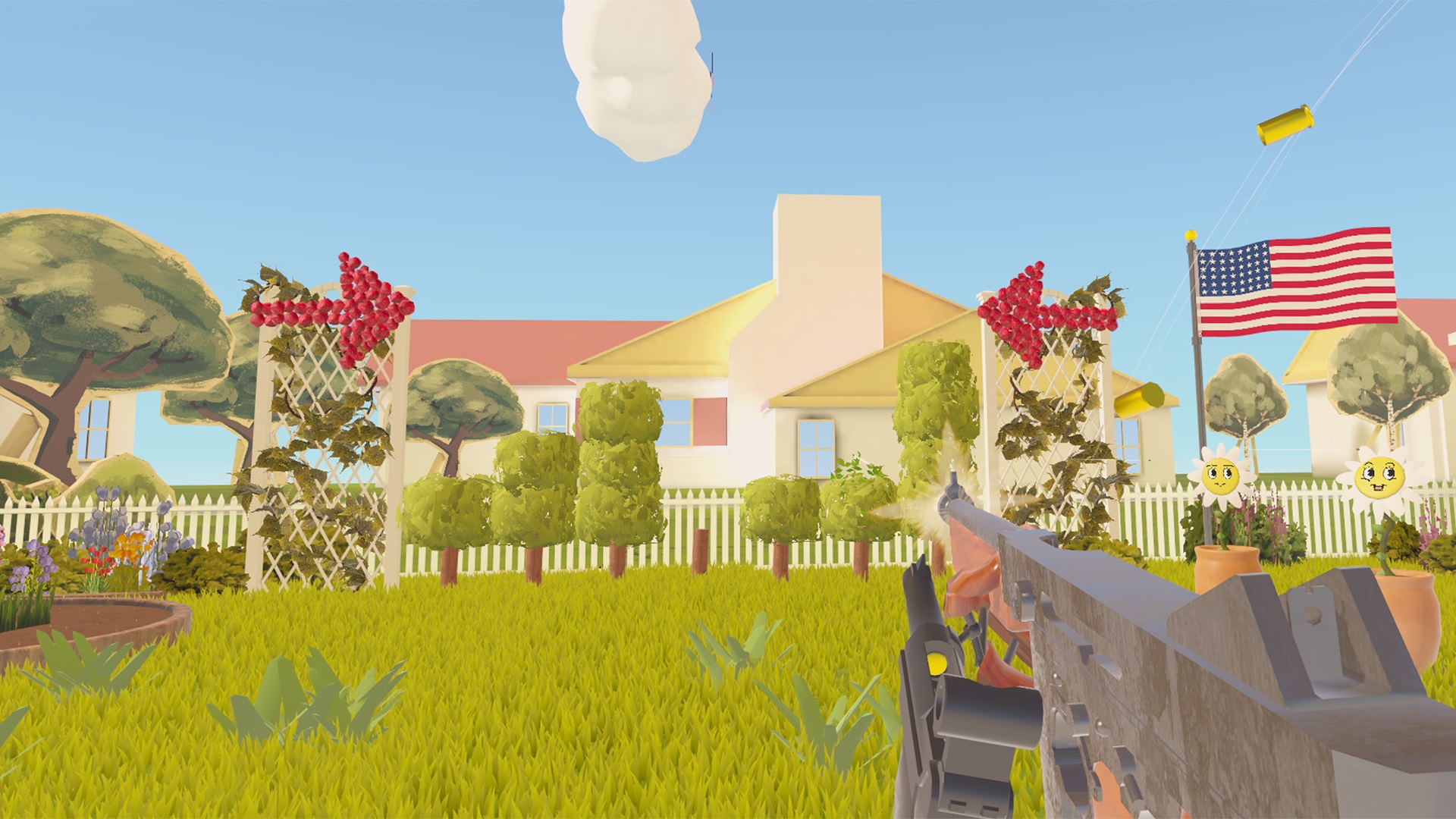If you’re currently buying into the vision of virtual reality as the next great platform then you’re likely an optimist with an active imagination like the rest of us. Science fiction has, for decades, painted an illustrious concept of what VR can be, resulting in understandably high expectations. We want to escape reality, find new fantastical places to visit, and connect with people all over the world as if they were standing right in front of us. It’s like a new Manifest Destiny of cyberspace, a new American Dream, or even a new Global Community Dream.
A big part of advancing society and cultural perceptions is reflection. Looking back on the past and learning from it are important, as well as inspecting the present in a way to enable growth and maturity. Regardless of which side you’re on of the current “gun debate” raging right now primarily in the US, you no doubt have a lot of thoughts about the violence and safety of the world. That’s precisely what The American Dream from Samurai Punk wants to tackle head-first.
In The American Dream you’re being ushered along a trip through time. The whole game plays out in a museum-like setting where each level is sort of like a demonstration. Rather than the demonstrations being about the actual 1950s that we all know, it’s an alternate history where guns rule everyone’s lives and are used for doing literally anything you can imagine from eating and dancing to gardening and driving a car.
A lot of VR games focus on making you feel as comfortable as possible. The field of vision narrows when you turn to avoid nausea or developers create teleportation systems so you don’t get sick from moving too quickly. Subject matter tends to lean towards power fantasies that make you feel good about yourself or towards silly experiences that try and earn a laugh or two.
The American Dream is different. While at first it appears to have a silly, slapstick, sardonic tone that you’d find in other franchises like Job Simulator and Rick and Morty: Virtual Rick-ality from Owlchemy Labs, or the South Park TV show and video games, the full picture is actually much different. It’s still satire, but it isn’t all about being silly.
During the VR trip, you take on the role of an average American citizen in the 1950s as you experience life in a world where guns are the most important thing. Each levels is a different point in your life as you grow over the course of the game and the role of guns and our culture’s obsession with them slowly starts to twist from silly to dark.
“The game’s purpose is to raise discussion and to be satirical, not to say, ‘Hey, we should control guns across America.’ It’s definitely funny, but it’s not just silly comedy either,” said Samurai Punk Co-Founder, Director, and Artist, Nicholas McDonnell. “But we need to establish a sense of guns being fun and safe and used for everything before we can start to take that feeling away from you while you’re playing. Thematically it builds you up as part of the American Dream and makes you want to believe in it and live it, then it tears it all away. That happens both physically with how the guns interact with the world and mentally in terms of what you do with them.”
We first saw The American Dream at PAX West last year. At that time the demo was only a few minutes long and consisted of the introduction and a handful of scattered levels that had us learning math as a baby with a gun, driving a car by shooting pistols, and blasting holes in bagels at a factory. During an updated demo in San Francisco, CA last week I got the chance to go hands-on with a dramatically upgraded build that shows some later portions of the game.
My new demo started out similarly to the last. I was a baby in a crib and I had to shoot the bedroom door with a gun to get my mom’s attention. She entered my room and put some cereal on the end of her pistol and leaned forward pointing it right in my face. Immediately I felt uneasy as I had to lean forward and stand up to reach the bit of cereal to “eat” like a good boy. Even though the visuals are a bit exaggerated and the characters are cardboard cutouts, voluntarily putting my mouth onto a gun in VR made me weary immediately and it honestly set the tone for the entire experience.
After some basic tutorial learnings, like how the game slows down when I reload by slamming a floating clip into my gun like something out of a John Woo or Matrix film, I was ready to progress further.
You can read more about the other areas we’ve seen before from the PAX West demo above and our PAX East preview. But my demo last week took a different turn and had new areas to try. Namely, I flipped burgers at my first job at a burger restaurant, I danced with my prom date in high school, and I tended the garden as a happy family man.
Each of these experiences would have been relatively simple to do in VR, but since this is The American Dream, it was a bit different. Flipping burgers with a gun felt very much like a simple, quick, arcade-style minigame. I shot them to flip them over and shot them again to get them on the bun before they burned. Shoot the sign and the order is sent on its way.
Before long, the assembly line approach was overwhelming with tons and tons of burgers. I never really had time to stop and reflect on anything that was going on because of the chaos — which was part of the point.
The very next stage had me dancing with my prom date in a high school gymnasium surrounded by other people. And by dancing I mean the game asked me to mimic her movements and her gun shots. I was firing a gun during a school dance, waving my arms like a lunatic, and then a switch seemed to flip in my head and I realized the point of the juxtaposition. I was shooting a gun, at a school, surrounded by people, and I had been tricked into laughing about it.
Later on when I was “tending my garden” things got more violent. I’d shoot cardboard birds out of the skies and see spurts of red blood pop into the air. I was told to kill the weeds as they were compared to Communists that needed to be eradicated. At one point, Buddy Washington (the Labrador-shaped statue with a megaphone in its mouth that serves as the game’s narrator) lectured me on the importance of guns, patriotism, and the American way.
In some places the heavy-handed narration was a bit on the nose and felt like it was trying a little too hard to be funny with its sarcasm, but it definitely got the point across.
By the end of my demo I was regretful of my laughs and smiles while playing. I have no doubt that McDonnell was watching me closely the entire time to gauge how my emotions and expressions changed throughout the course of my demo.
Samurai Punk is aiming for The American Dream to last somewhere around 2-3 hours and they want people to experience it in 1-2 sittings. Breaking it up into several chunks would rid the game of its evolution and emotional impact as the dark, twisted aspects start to slowly rear their faces as you venture deeper into your trip.
“We’re not here to say you can’t use guns in games, our only other finished game is a first-person shooter (Screen Cheat) and we like putting guns in games,” explains McDonnell. “But now we have this great new medium with VR and a lot of the game content is just the same types of things we already had outside of VR. Is that on the part of the developers that don’t know how or want to make other things, or do people just want more stabbing and shooting games? With The American Dream we wanted to get across this mixed feeling we have.”
One final note, something that I think really encapsulates the idea behind The American Dream from a subtle design perspective, is that between each level you’re sent through a tunnel in place of watching a loading screen. At first I didn’t notice, but by the end it had hit me: each tunnel is designed to look just like the barrel of a gun. Small, clever things like that are what make me confident the end result of The American Dream is going to be a smart, satirical parody that will likely leave anyone that experiences it with very strong opinions…one way or another.
The American Dream is slated to release at some point in Q3 of 2017 for PlayStation VR, Oculus Rift with Touch, and HTC Vive. No exact price is set at this time. Let us know what you think from what you’ve seen and heard down in the comments below!

